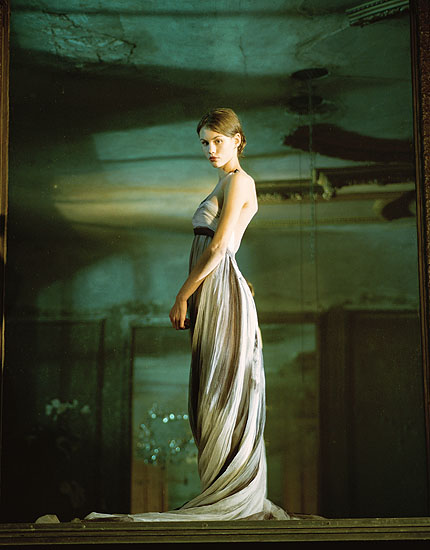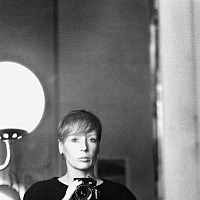
She has written photographic history: Sibylle Bergemann (born in Berlin in 1941) is one of Germany's truly great photographers. The diversity and scope of her work are frankly remarkable - thus, her mastery embraces fashion, reportages and photo-essays no less than landscapes, cityscapes and portraits. Her images are permeated by respect and empathy for people and their circumstances. Restraint is a hallmark of her photography, whose attention is fully focussed on its subjects. This approach allows Bergemann often to hit on pictorial formulations that are as surprising as they are convincing. Her photographic stance is that of a poetic realist.
Bergemann's images depict much more than merely visible surfaces: moods (without being 'moody' in a clichéd way) and atmospheres (but no trace of dreamy abandon). And she composes her pictures with the sure touch of a sleepwalker, with her intuition and experience determining the perfect cropping, cut and composition.
There's also something surreal about Bergemann's photographs. Her ability to discover and visually capture surprising interrelationships between things and between people never fails to amaze the viewer.
After training with Arno Fischer, Bergemann made a name for herself via her fashion pictures that appeared in the GDR magazine, Sibylle, from the 1960s onward - not run-of-the-mill fashion pictures, but rather fashion portraits and subtly composed arrangements with a highly distinctive visual grammar. In addition, she took portrait shots of actors and artists. She later produced reportage work in New York, Paris, Tokyo and São Paulo, and has also travelled to Africa and Asia for magazines like GEO. For many years, work on Polaroids has also been a part of Sibylle Bergemann's artistic repertoire.
While the vast majority of her work until 1990 was in black-and-white, she has since emerged as one of the few photographers capable of using colour not merely for illustrative purposes but as a crucial constitutive element in the construction of meaning.
T.O. Immisch

